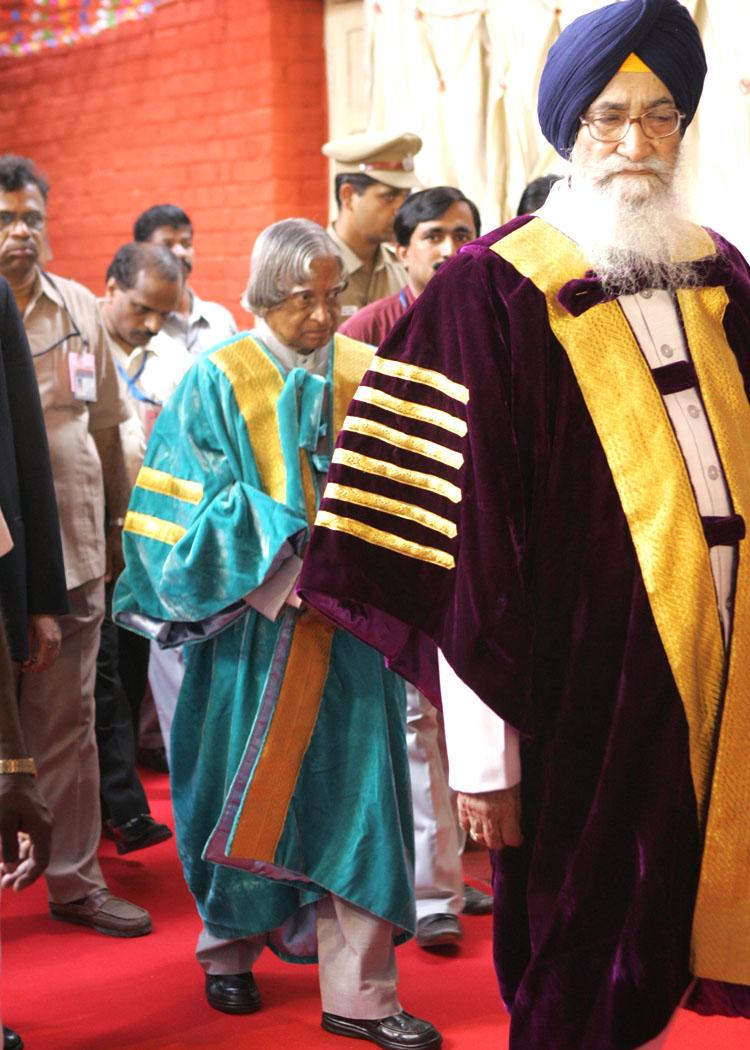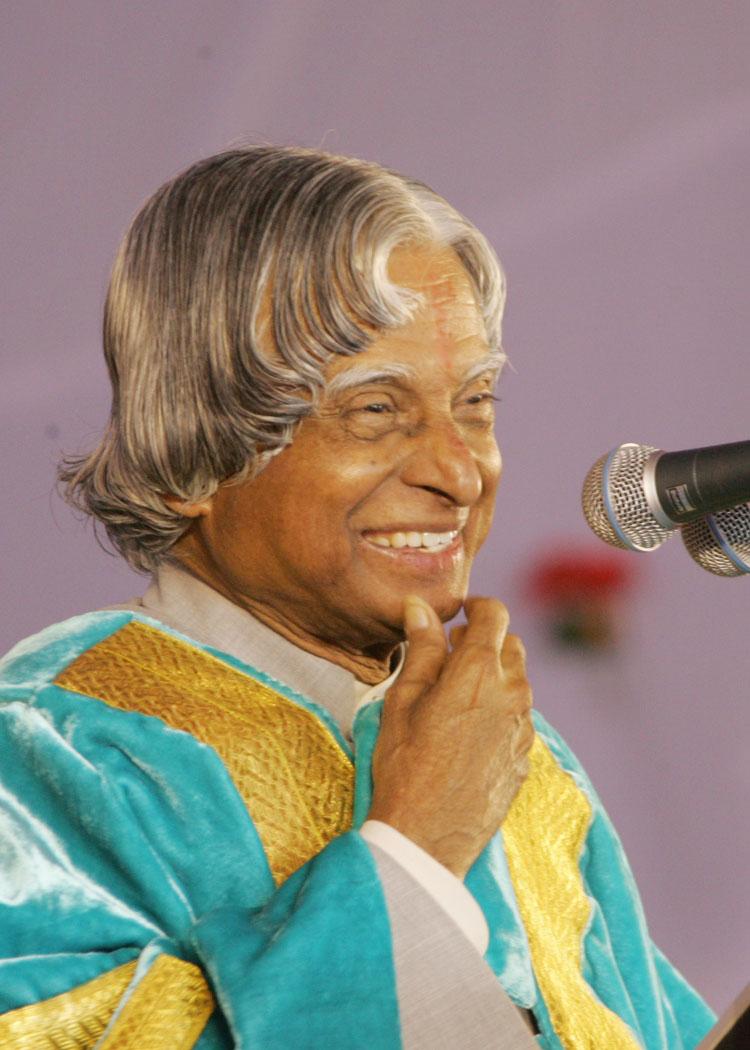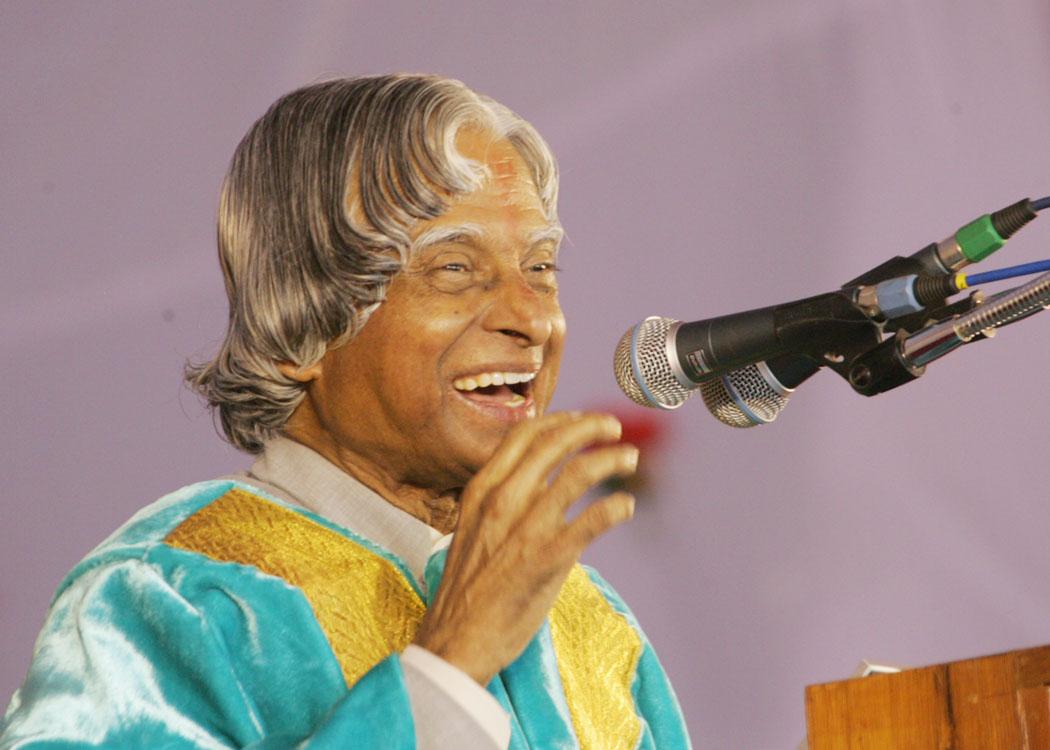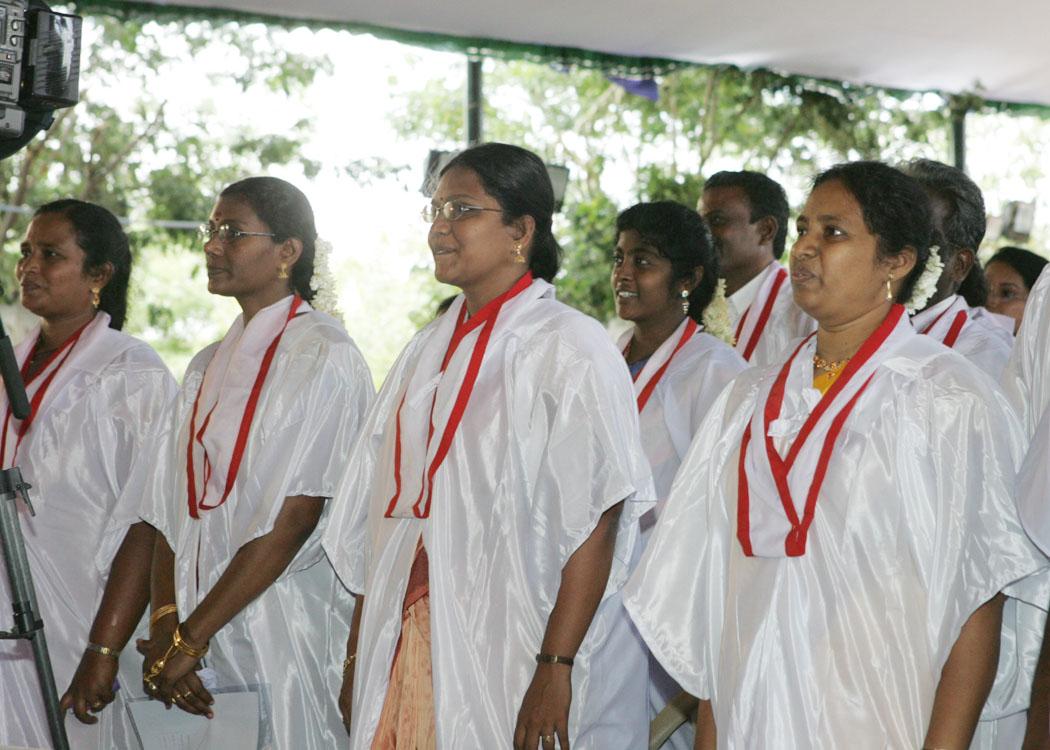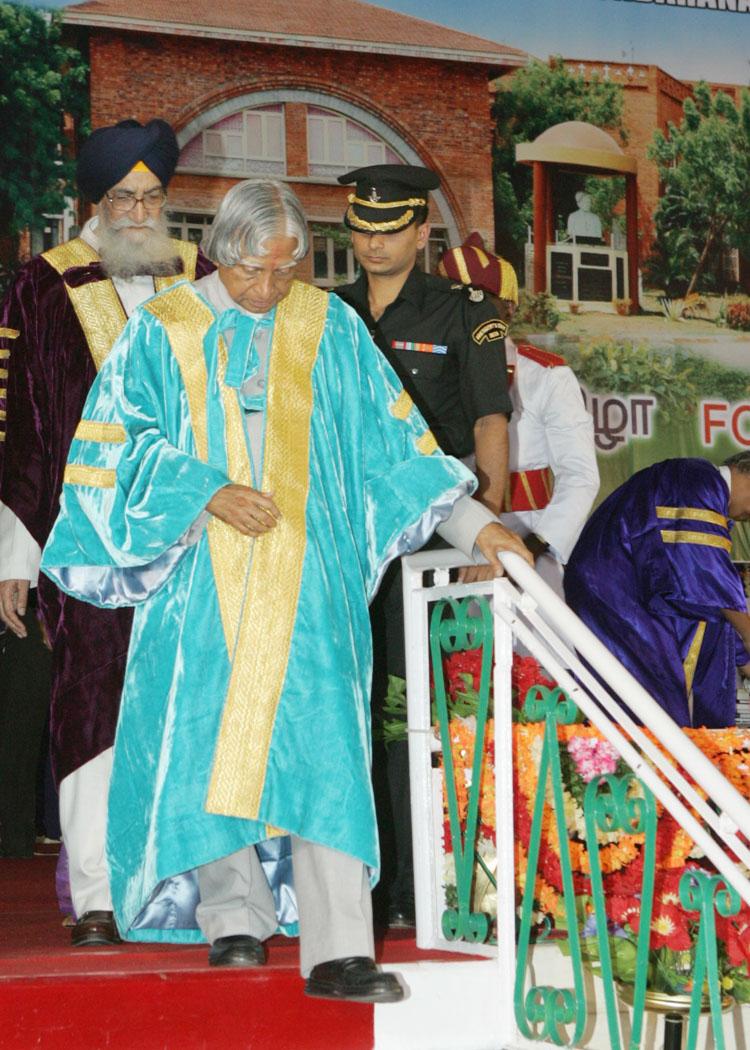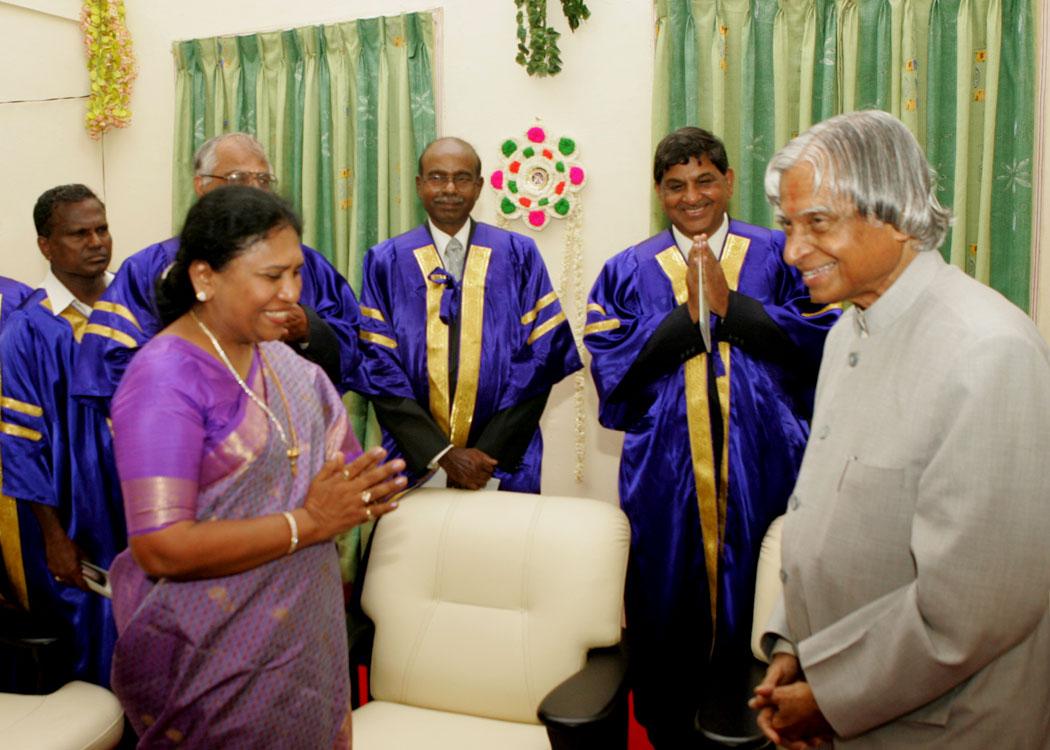Address at the 14th Convocation of Manonmaniam Sundaranar University, Tirunelveli, Tamil Nadu
Tirunelveli : 22-09-2006
Capacity Building in University Education

I am delighted to participate in the 14th Convocation of Manonmaniam Sundaranar University, Tirunelveli. My greetings to the Vice-Chancellor, faculty members, staff, students and other participants.
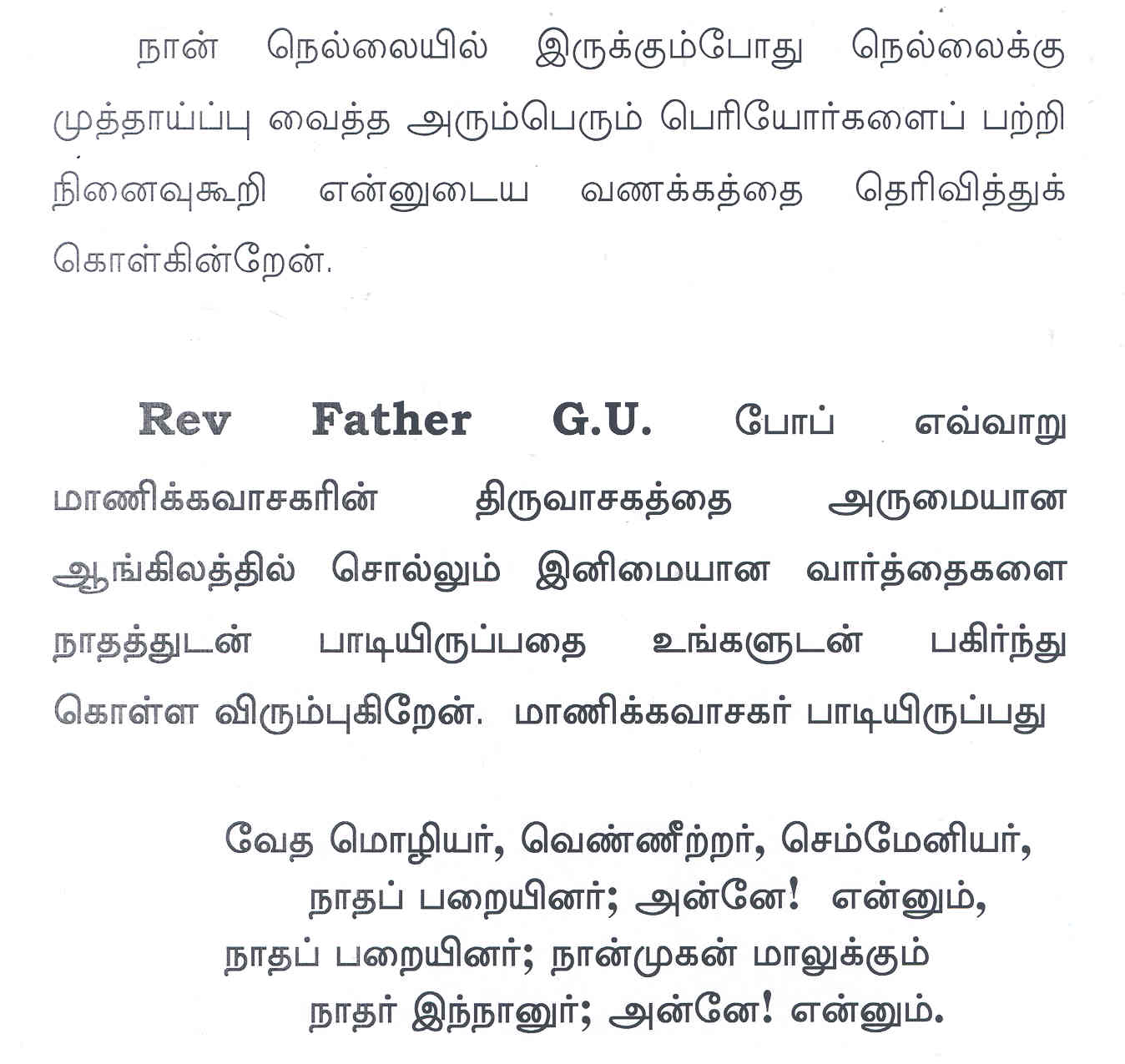
His world is the Vedam; ashes white He wears;
Rose-red is His form; His drum is the Natham;
MOTHER!' SAITH SHE.
His drum is the Natham; to the Four-faced,
And to Mal too, this Lord is the Lord;
MOTHER!' SAITH SHE.
English translation work of Thiruvachagam composed by Manikkavachagar undertaken by Rev G.U. Pope was published on his 80th birthday in 1900. It contains the history of the saint poet and the valuable notes on the South Indian System of Philosophy and Religion.
Rev. Dr. G.U. Pope (1820-1907), an eminent English Professor, came to the Tamil Nadu and took constant efforts to propagate the real importance about the classical language 'Tamil'. He was Professor of Tamil in Oxford University and having read the Tamil literature he arrived to Tirunelveli and stayed at Sawyerpuram, a rural place in Tirunelveli district. Having gone into depth and enjoyed the contents of "Thiruvacagam" by "Manikavasagar", he translated the same into English. There is a proverb in Tamil "Thiruvasagathirku urugathaar oru vasagathirkum urugathaar" and it is very much true in the case of Rev. Dr. G.U. Pope.
Rev Pope started his first Tamil lesson in 1837. On the publication of Thiruvacagam this translation work, he mentions that "this ends as I supposed a long life of devotion to Tamil studies. It is not without deep emotion, I thus bring to a close my life?s literary work."
Some years ago when this publication was hardly projected one evening after prayers, Rev Pope was walking with the Master of Balliol College. The conversation turned upon Tamil legends, poetry and philosophy. During a pause in the conversation, the master said in a quick way "you must print it". To this the natural answer by Rev Pope was "Master I have no patent of the mortality and the work would take very long". I can see him now as he turned around ? while the Moon light fell upon his white hair and kindly face ? and laid his hand upon my shoulder saying "to have a great work in progress" is the way to live long. You will live till you finish it. I certainly did not think so then, though the words have often come to my mind as a prophecy, encouraging me when weary and have been fulfilled while he has passed out of sight. The perseverance of Rev G U Pope is definitely a model worth emulating for all of us. Rev Father Pope has indeed integrated himself with Manikavasagar, in meaning and rhythm of Thiruvacagam.
When I hear the name "Manonmaniam Sundaranar", I am reminded of the contribution of Professor Sundaram Pillai is who is known for his research work in determining the exact period of Gnanasambandar using purely literary evidences. Thus, Tirunelveli and Manonmaniam Sundaranar University has extraordinary role models whom the student and faculty can emulate. Now, I would like to discuss the role to be played by the University in building capacity among our students.
Capacity Building
A good educational model is the need of the hour to ensure that the students grow to contribute towards the economic growth of a nation. Can we sow the seeds of capacity building among the students? There will be continuous innovation during the learning process. To realize this, special capacities are required to be built in education system for nurturing the students. The capacities which are required to be built are research and enquiry, creativity and innovation, use of high technology, entrepreneurial and moral leadership.
Research and enquiry: The 21st century is about the management of all the knowledge and information we have generated and the value addition we bring to it. We must give our students the skills with which they find a way through the sea of knowledge that we have created and continue with life long learning. Today, we have the ability, through technology, to really and truly teach ourselves to become the life-long learners. This is required for sustained economic development.
Creativity and innovation: The management of knowledge in the 21st century is beyond the capacity of a single individual. The amount of information that we have around is overwhelming. The management of knowledge therefore must move out of the realm of the individual and shift into the realm of the networked groups. The students must learn how to manage knowledge collectively. When the information is networked the power and utility of the information grows as square as stated by Metcalfe's law. Information that is static does not grow. In the new digital economy information that is circulated creates innovation and contributes to national wealth.
Capacity to use high technology: Every student in our colleges should learn to know how to use the latest technologies for aiding their learning process. Universities should equip themselves with adequate computing equipment, laboratory equipments, and Internet facilities and provide an environment for the students to enhance their learning ability. In the midst of all of the technological innovations and revolutions we cannot think that the role of the teachers will be diminished. In fact the teacher will become even more important and the whole world of education will become teacher assisted and would help in "tele-porting" the best teacher to every nook and corner of the country and propagate the knowledge.
Entrepreneurship: The aptitude for entrepreneurship should be cultivated right from the beginning and in the university environment. We must teach our students to take calculated risks for the sake of larger gain, but within the ethos of good business. They should also cultivate a disposition to do things right. This capacity will enable them to take up challenging tasks later.
Moral leadership: Moral leadership involves two aspects. First it requires the ability to have compelling and powerful dreams or visions of human betterment. Moral leadership requires a disposition to do the right thing and influence others also to do right things.
In sum, inquiry, creativity, technology, entrepreneurial and moral leadership are the five capacities required to be built through the education process. If we develop in all our students these five capacities, we will produce ?Autonomous Learner? a self-directed, self controlled, lifelong learner who will have the capacity to both, respect authority and at the same time is capable of questioning authority, in an appropriate manner. These are the leaders who would work together as a ?Self-organizing Network? and transform any State as a prosperous State. The most important part of the education is to imbibe the confidence among the students is the spirit of ?we can do it?. These capacities will enable the students to meet the challenges of our national mission of transforming the nation into a developed country by 2020. Since I am in the midst of teachers and students, I would like to convey the importance of good research leading to quality teaching. Quality teaching will result in high level research.
Research-Teaching-Research
Good teaching emanates from Research. The teachers? love for research and their experience in research are vital for the growth of the institution. Any University is judged by the level and extent of the research work it accomplishes. This sets in a regenerative cycle of excellence. Experience of research leads to quality teaching and quality teaching imparted to the young in turn enriches the research.
Technology is the non-linear tool available to humanity, which can affect fundamental changes in the ground rules of economic competitiveness. Science is linked to technology through applications. Technology is linked to economy and environment through manufacture of knowledge products. Economy and environment are linked to technology, which promotes prosperity to the society. We have to use innovation to generate high value added products for becoming a global player. Your university is known for scientific research and teaching.
I am happy to see that the number of research and development missions have been undertaken by the University such as devise to tap palm juice, distilling ethanol from palm juice, cost effective bio-degradable material as a replacement for non-degradable thermocol board and gum extraction from tamarind seeds, sensors to detect industrial air pollutants, artificial feed for fattening of marine lobsters, trash fish liver oil an alternative to cod liver oil. It is essential to manufacture these research products in a massive scale with the local entrepreneurs with quality and cost effectiveness so that this will become an employment generator for the Nellai PURA in this region but also to the various rural PURA clusters in the country. Research Consortium of Manonmaniam Sundaranar University focusing on various disciplines has resulted in to the development projects worth of Rs. 75 crores and is submitted for the central and state government agencies. It is important that university has submitted the major research and development programme for this region in the areas of Non Conventional Energy, DNA technology, Waste water management and other areas of core competence of this university.
PURA
With the research as its core competence, University can focus on the societal missions for rural transformation. One of the areas where the University can focus in this region namely Tirunelveli, Kanyakumari and Tuticorin is the development of PURA which involves creation of a cluster of villages and providing physical, electronic and knowledge connectivity to the entire cluster which will provide economic connectivity for a typical population of about 50,000 people. Let me illustrate the Rural development programme through an example.
Periyar PURA
I had visited Periyar Maniammai College of Technology for Women, Thanjavur in Tamil Nadu and inaugurated a PURA Complex. I thought of sharing with you the developmental concept of a cluster of over 65 villages near Vallam, Thanjavur district of Tamilnadu which involves a population of 3 lakhs. This PURA complex has all the three connectivities - physical, electronic and knowledge - leading to economic connectivity. The centre of activity emanates from the women?s engineering college that provides the electronic and knowledge connectivity. I understand that now five of the Periyar PURA villages have been connected with Wi-MAX connectivity. Periyar PURA has health care centres, primary to post graduate level education and vocational training centres. This has resulted in large scale employment generation and creation of a number of entrepreneurs with the active support of� 850 self-help groups. Two hundred acres of waste land has been developed into cultivable land with innovative water management schemes such as contour ponds and water sheds for storing and irrigating the fields. All the villagers are busy in cultivation planting Jatropha, herbal and medicinal plants, power generation using bio-mass, food processing and above all running market centres. This model has emanated independent of any government initiative. The committed leadership has been provided by a Women?s Engineering College. Similarly, Manonmaniam Sundaranar Univeristy can select and adopt a cluster of villages near Tirunelveli, Kanyakumari and Tuticorin on the plains and sea coast and give a plan action for development to the Government or corporate houses. I will be discussing about PURA in the next meeting organized by Confederation of Indian Industries. We will be having discussions on creation of BPOs and IT enabled services and enterprises in the tier-3 cities. The University can become a partner in this rural development effort with the industrial entrepreneurs and bankers. Now, I would like to talk about Coastal PURA which is particularly applicable to this region.
Coastal PURA
Dr. P.S. Rana, Chairman HUDCO has made a detailed study on the development of coastal PURA in different coastal regions. The salient features of the coastal PURA developed by him are as follows.
Physical Connectivity: Construction of small ports and small and medium sized boat landing centres on the coast in the interval of 10 to 15 km range. Each of these will have a good link road to the main coastal road. Some times road transportation may be complemented with waterways. Establishment of Community Sheds for repair of nets, storing the nets and related equipments of the fishing community and Boat building and repair small scale industries.
Electronic Connectivity: All the fishing villages on the coastal areas have to be linked with the District Headquarters through the Broadband fibre and wireless connectivities. Fishing community should be provided with broadcasting facilities through Satellite radios and HAMSAT network. Mobile cell phone with GPS facility may be provided for each boat for emergency communication. This will also provide the local fish school data, local meteorological and local sea state data through SMS from the Village knowledge Centres obtained from near by the Meteorological station, Disaster Management stations, District Headquarter station and the other service providers.
Knowledge Connectivity: Government should facilitate the training of fishing community in cost effective safe fishing techniques, application of technology for improving the productivity, storage and preservation systems and cost effective marketing, banking & financing systems through the District Headquarters Studio and the connected village knowledge centers. It will also provide adequate warning data for the fishing community on the sea to return to home safely.
Economic Connectivity: These three connectivities -physical, electronic and knowledge will lead and enable the local population to create economic centres such as cold storage infrastructure, fish processing and packaging and marketing for realizing the value added price. This will also provide alternative employment oriented schemes during non-fishing days and for people who are involved in agriculture and other activities. In addition to fishing activity, the fisherman can take up seaweed plantation as a complimentary form of employment generation which is being done near Mandapam.
Bio-products from Seaweed: Scientists of Central Salt and Marine Chemicals Research Institute (CSMCRI), Bhavnagar have developed an important thickening agent Car-ra-gee-nan using seaweed called Kap-pa-phy-cus al-va-re-zii that bestows useful properties to many commercial products such as toothpaste, ice-cream, pet food and soft capsules. Women self-help groups in Mandapam region of Tamil Nadu are engaged in the cultivation seaweed with the help of certain financial institutions.
Technology is available for liquefying the seaweed which can be separated into a solid and a liquid to obtain two products. The solid is the source of car-ra-gee-nan and the liquid is a plant nutrient. This sap has been used in a variety of crops such as sugarcane, paddy, maize, pulses and several fruits and vegetables. The productivity increase has been in the range of 20% to 40% in different regions for different plant varieties as per studies conducted by regional institutions.
I would suggest this University can provide know-how for seaweed cultivation and value addition to the fisherman co-operatives and self-help groups of the coastal areas, particularly in the PURA complexes in partnership with industrialists and bankers.
Conclusion: Indomitable Spirit
Now I would like to recall a great clarion call of indomitable spirit, which was given by Sir CV Raman, at the age of 82. The message is still reverberating in my mind: ?I would like to tell the young men and women before me not to lose hope and courage. Success can only come to you by courageous devotion to the task lying in front of you. I can assert without fear of contradiction that the quality of the Indian mind is equal to the quality of any Teutonic, Nordic or Anglo-Saxon mind. What we lack is perhaps courage, what we lack is perhaps driving force which takes one anywhere. We have, I think, developed an inferiority complex. I think what is needed in India today is the destruction of that defeatist spirit. We need a spirit of victory, a spirit that will carry us to our rightful place under the sun, a spirit, which will recognize that we, as inheritors of a proud civilization, are entitled to a rightful place on this planet. If that indomitable spirit were to arise, nothing can hold us from achieving our rightful destiny."
My congratulations to the all the graduates who are passing out from this University today and my best wishes to all the members of Manonmaniam Sundaranar University in their mission of providing quality education to the youth of Thirunelveli, Tuticorin and Kanyakumari Districts.
May God bless you.

